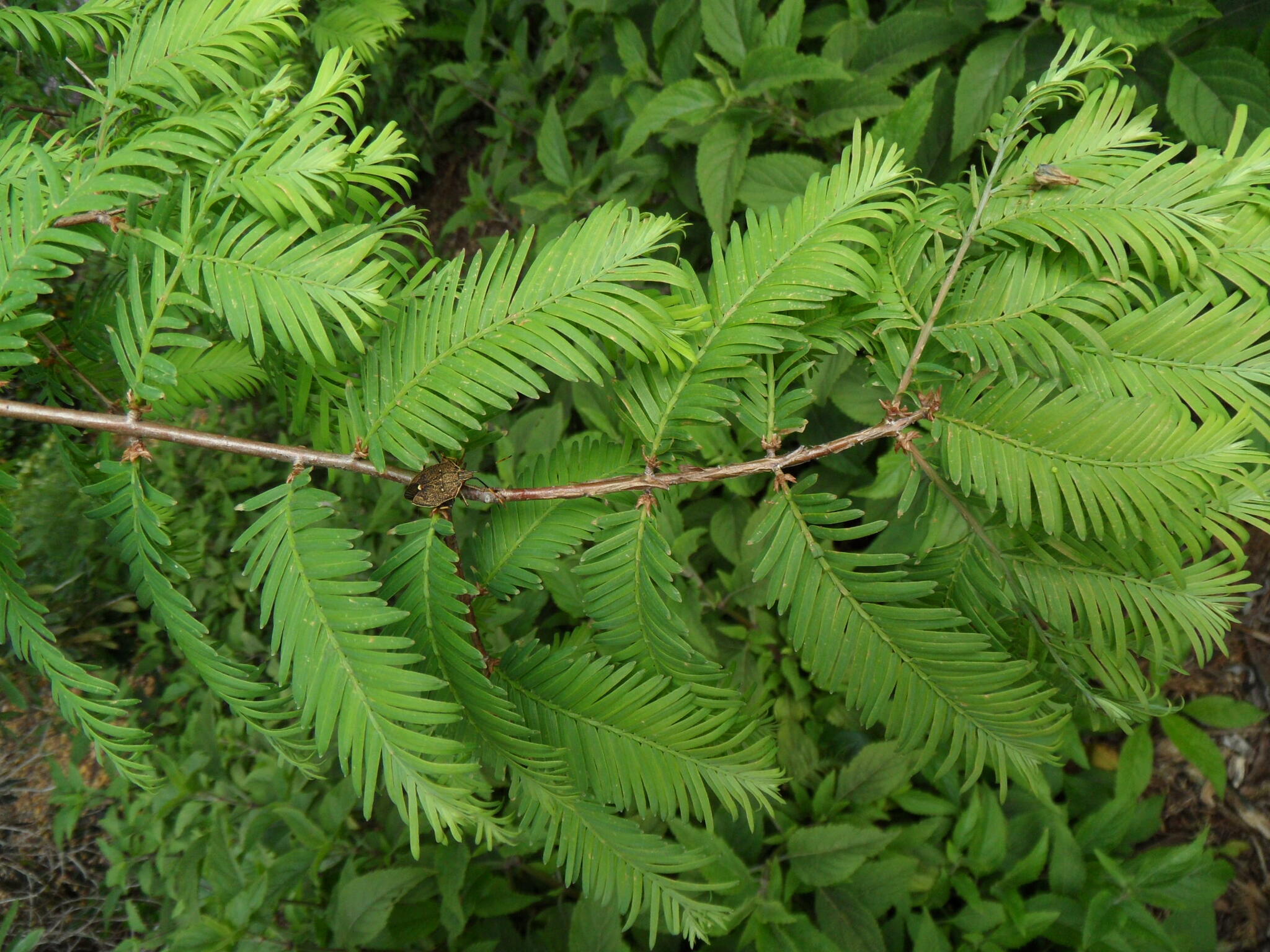
Greek meta - after, sequoia; referring to the close relationship of these trees.
A large, conical, deciduous tree. Trunk tapering from a buttressed base on old specimens. Bark initially red-brown but paling with age and peeling in thin strips. Branches ascending. Branchlets of 2 kinds; persistent, with short-stalked vegetative buds and few leaves; deciduous, opposite, with the leaves arranged in 2 ranks, flattened, feathery, c. 1.5 cm long, linear and slightly curved, turning yellow to red-brown in autumn before being shed together as a complete spray. Male cones cylindric, each c. 3 mm long arranged on drooping catkins. Female cones c. 2.5 cm wide, terminal, solitary and pendulous on short branchlets, ripening in the first year and consisting of c. 20-30 paired woody scales each with 5-8 seeds. Seed c. 5 mm long with two broad wings.
Closely related to Taxodium and Glyptostrobus but with leaves, deciduous shoots and cone scales in opposite pairs. For description see species.
1 species from China.
Seed and semi-hardwood and hardwood cuttings.
Leaves in opposite, feathery sprays.
Merrill (1948), Wyman (1968), Shiu Ying Lu. (1980), Bartholomew et al. (1983), Hsueh (1991).
Source: (1995). Taxodiaceae. In: . Horticultural Flora of South-eastern Australia. Volume 1, Ferns, conifers & their allies. The identification of garden and cultivated plants. University of New South Wales Press.
